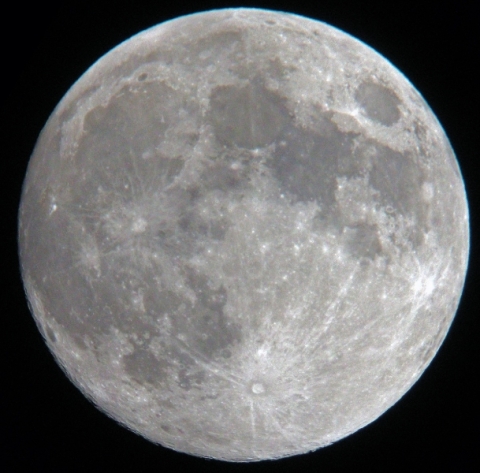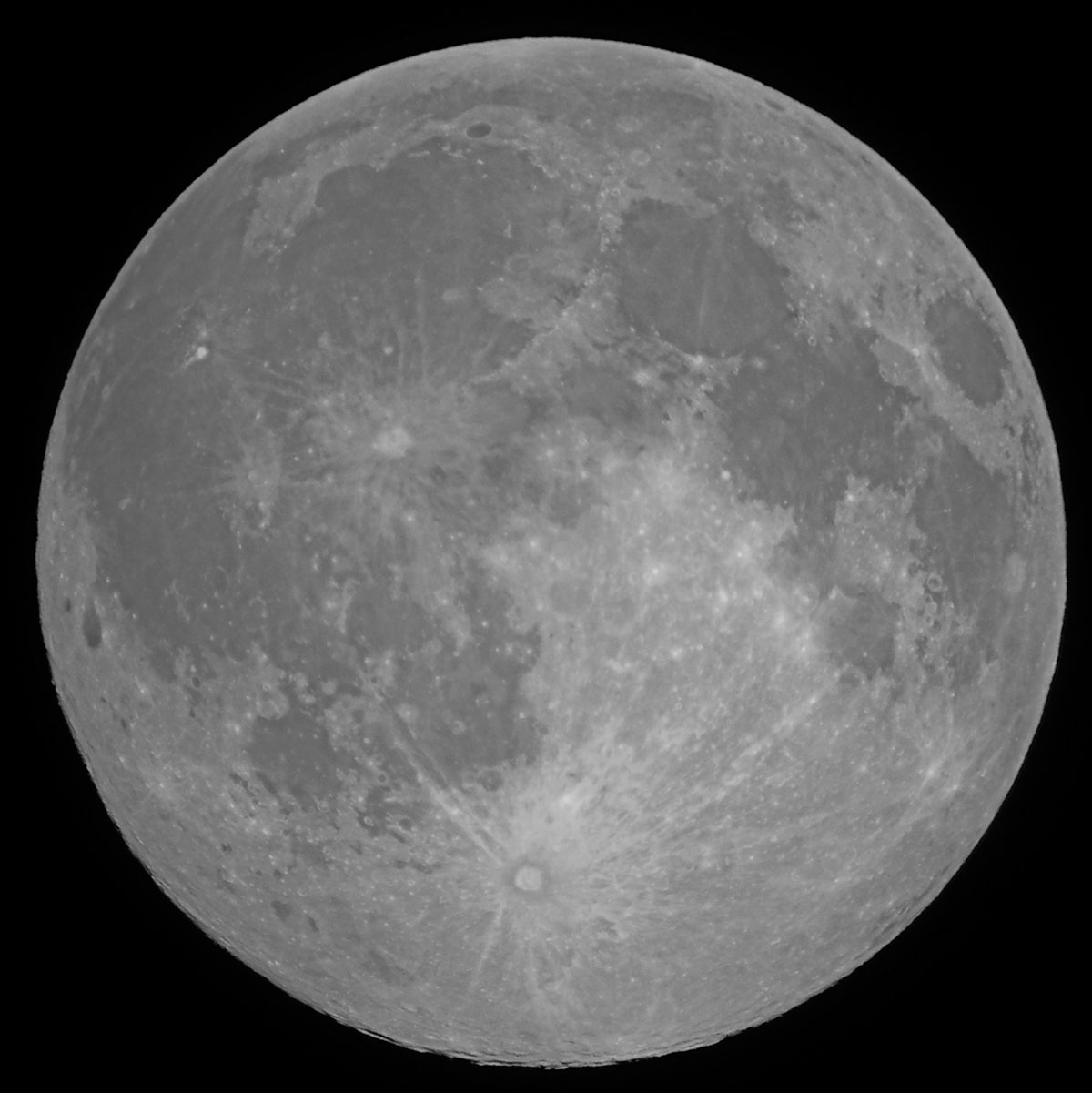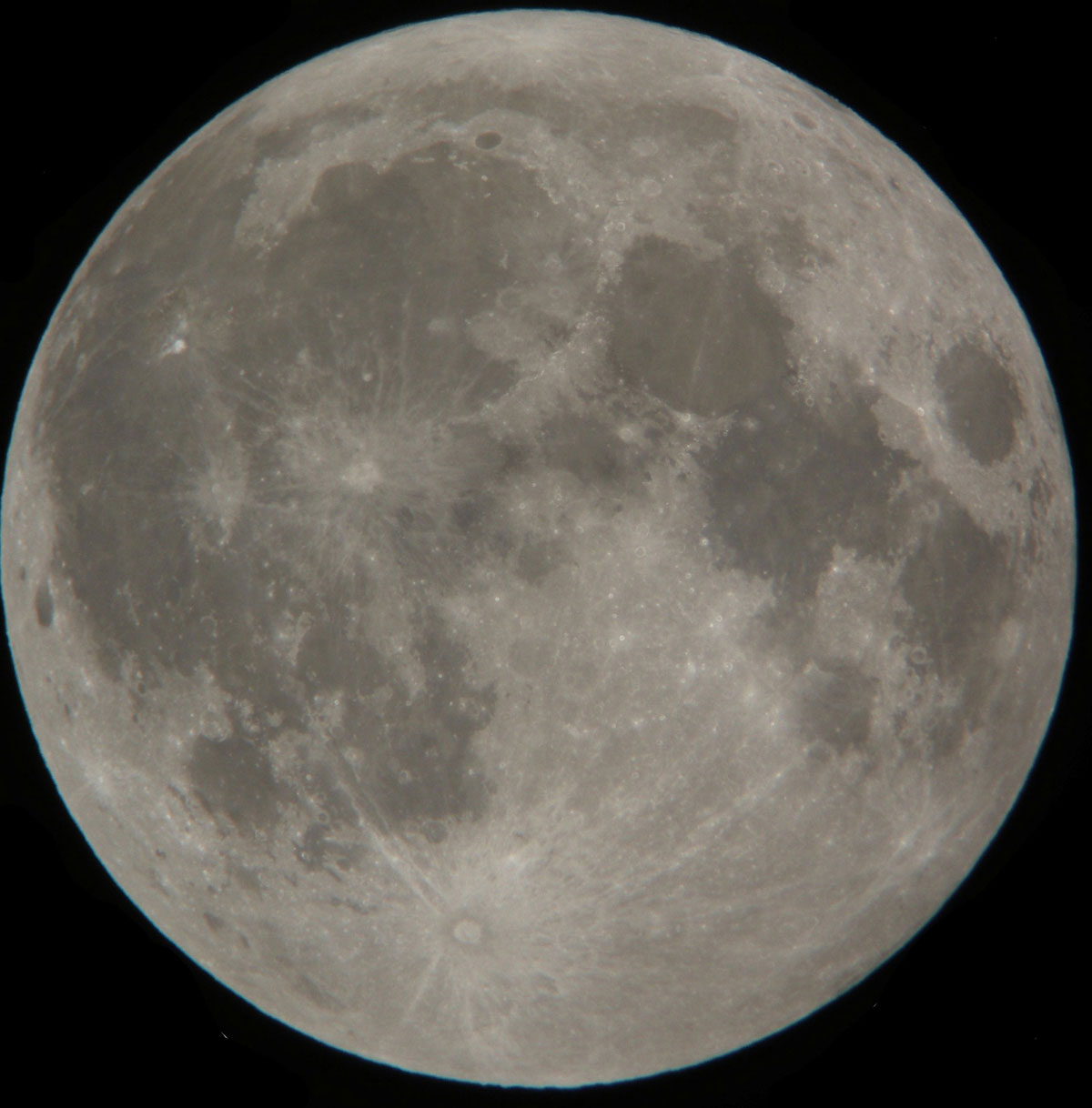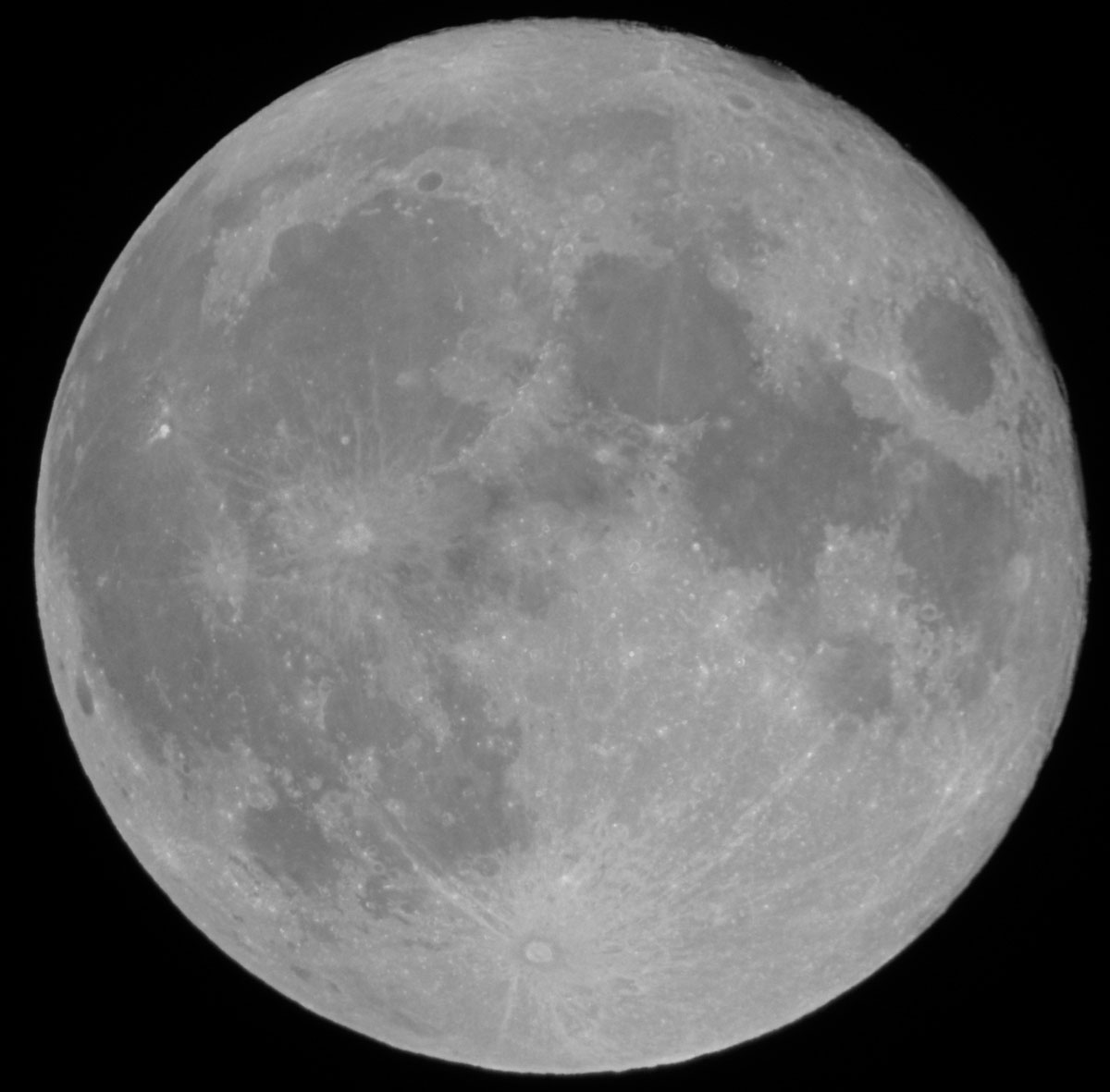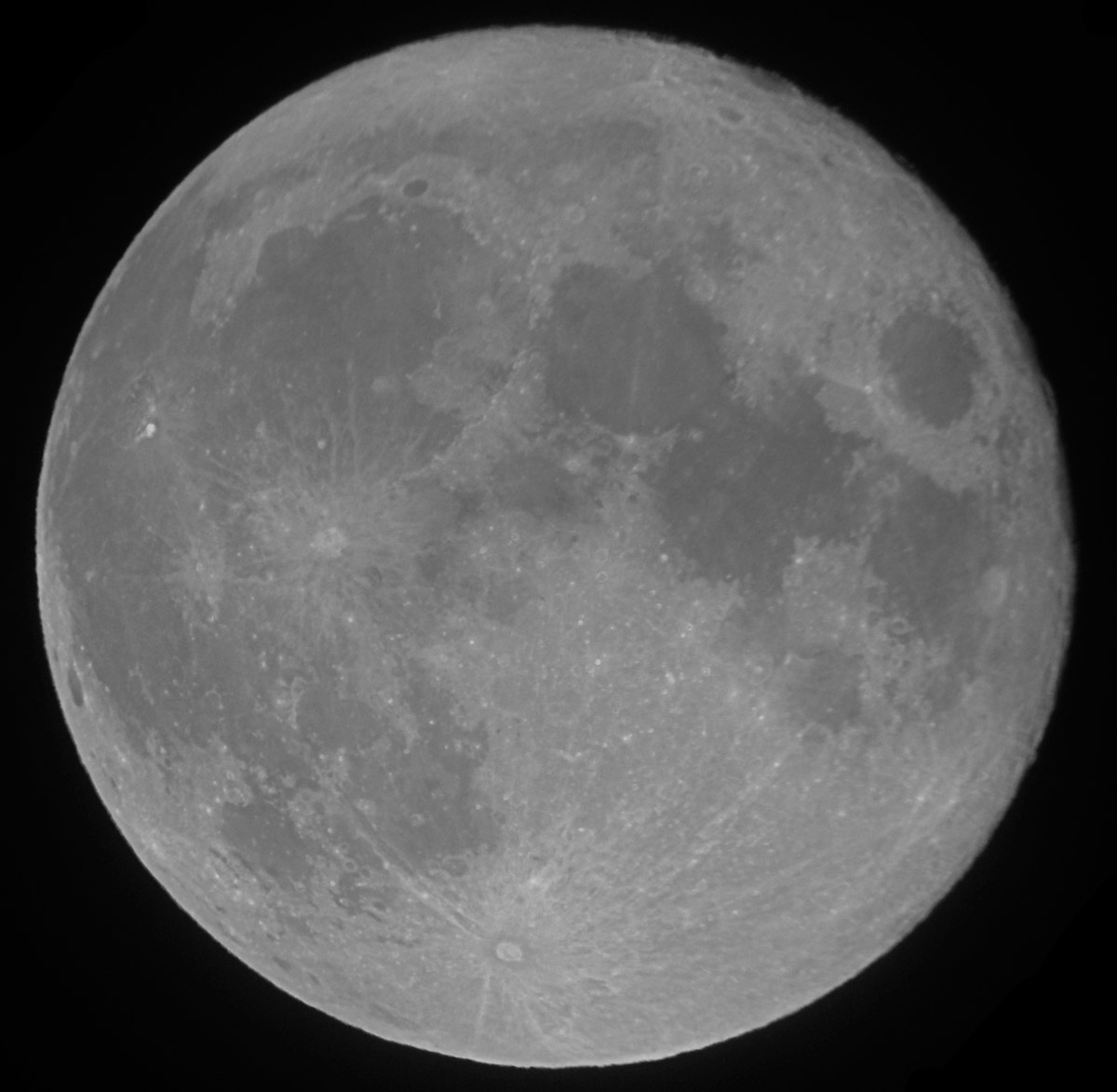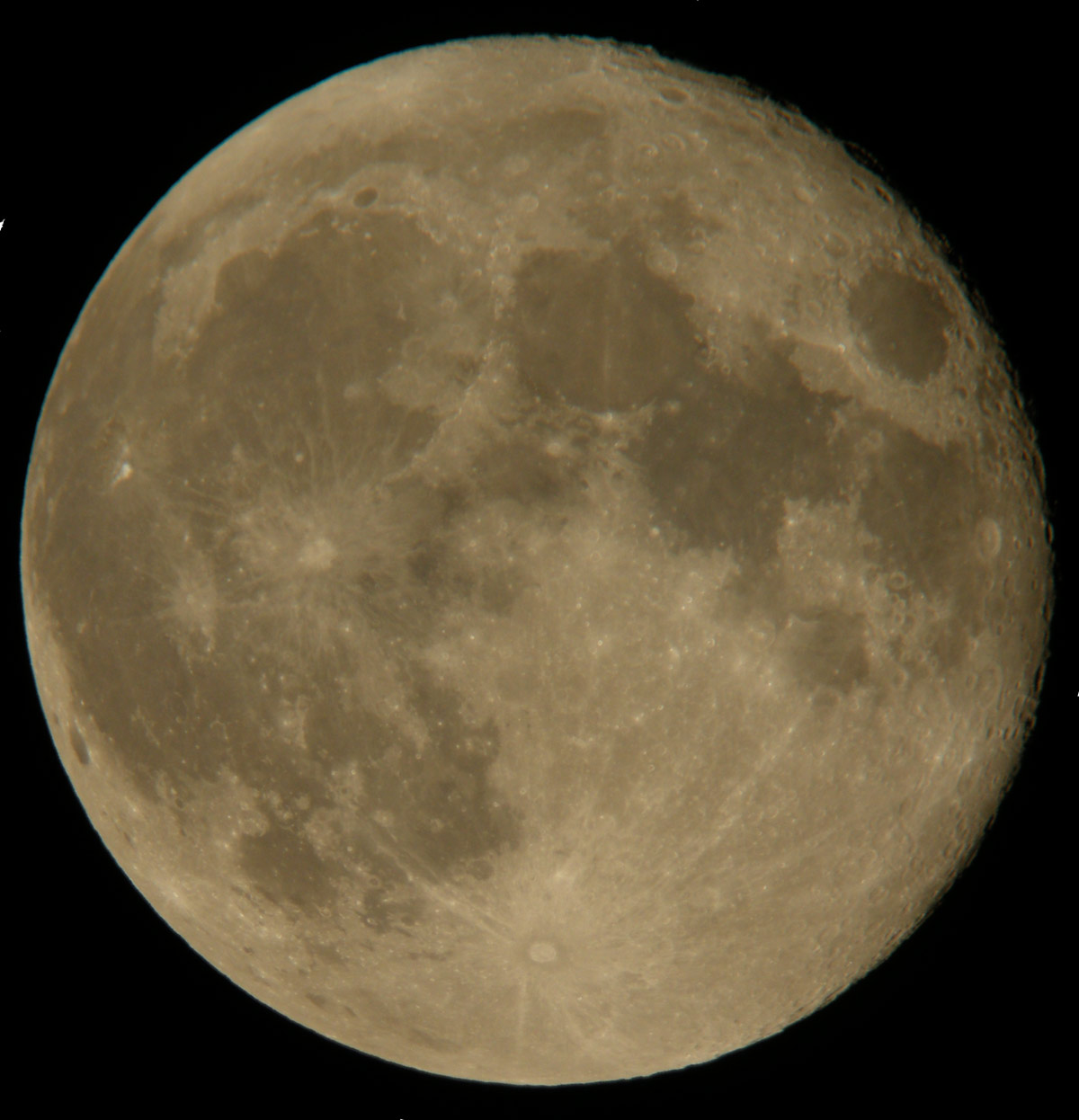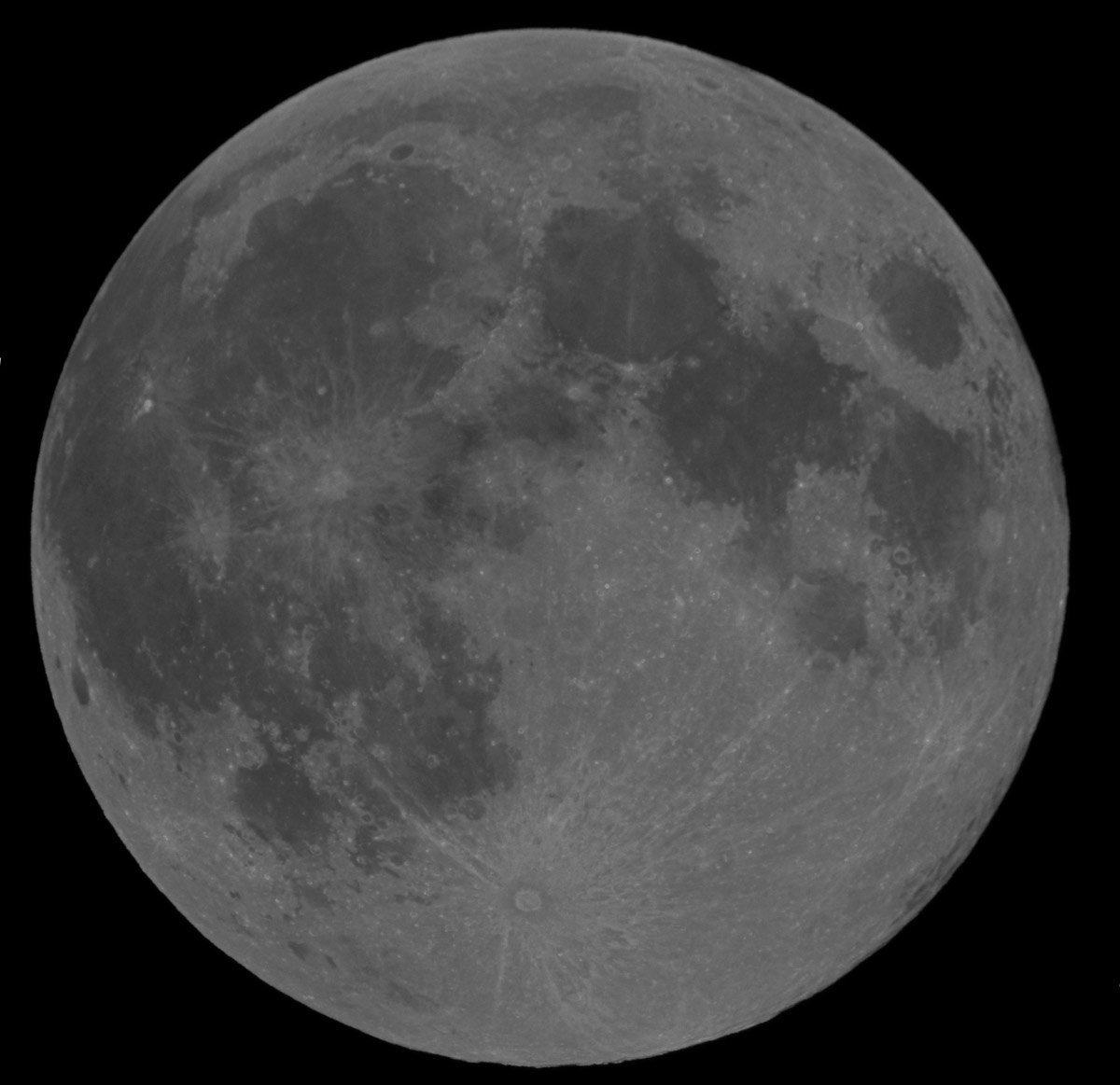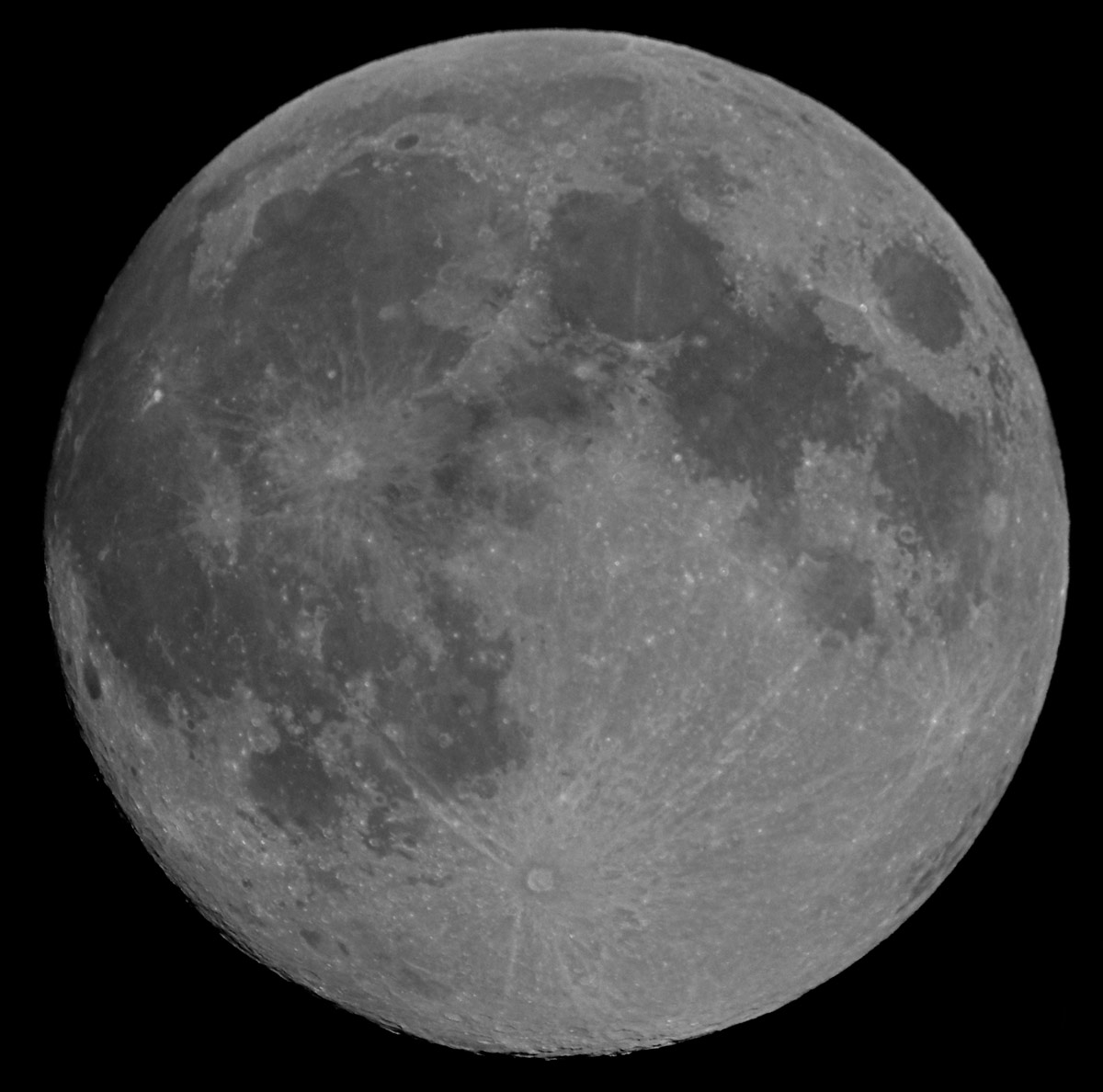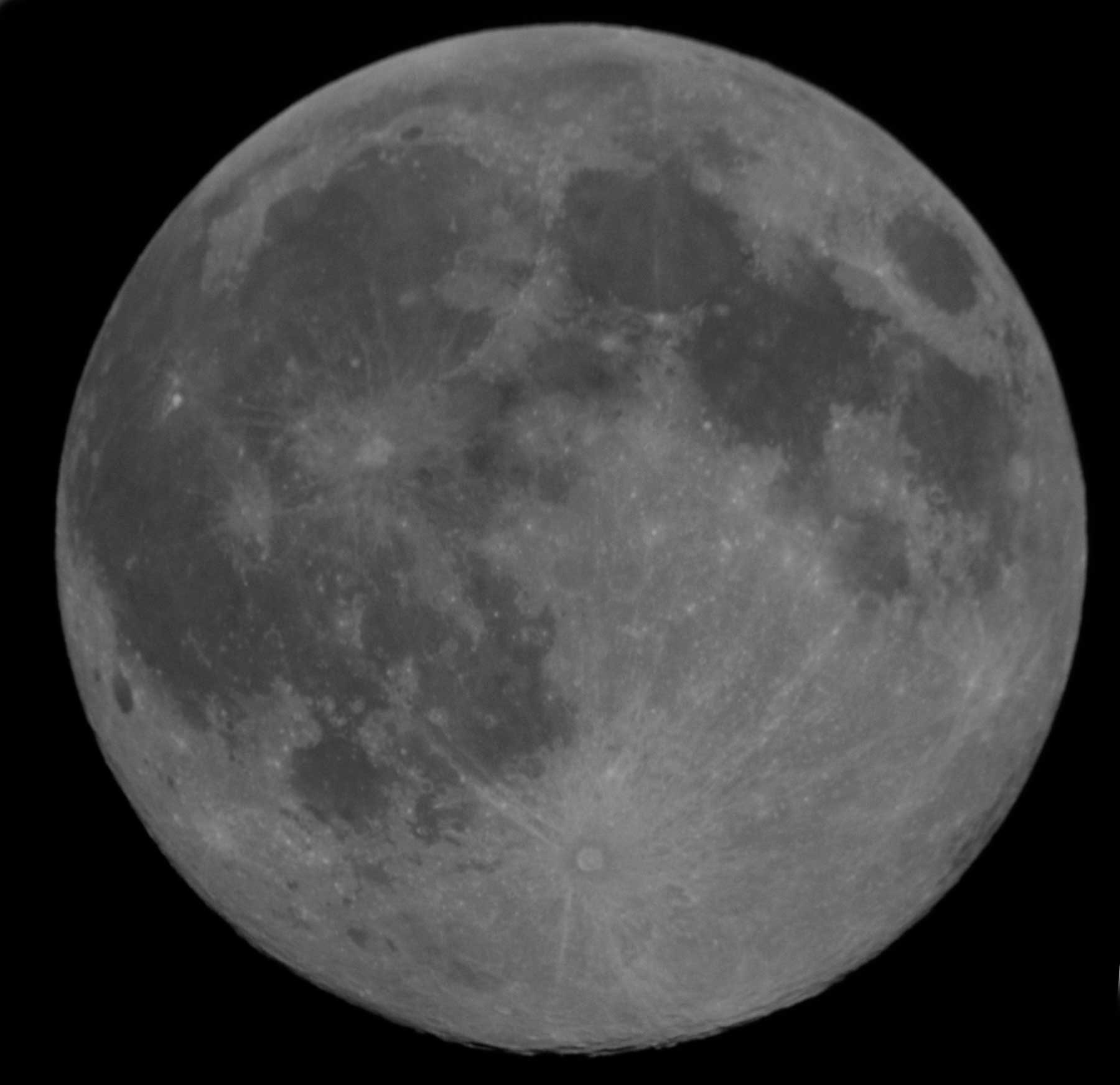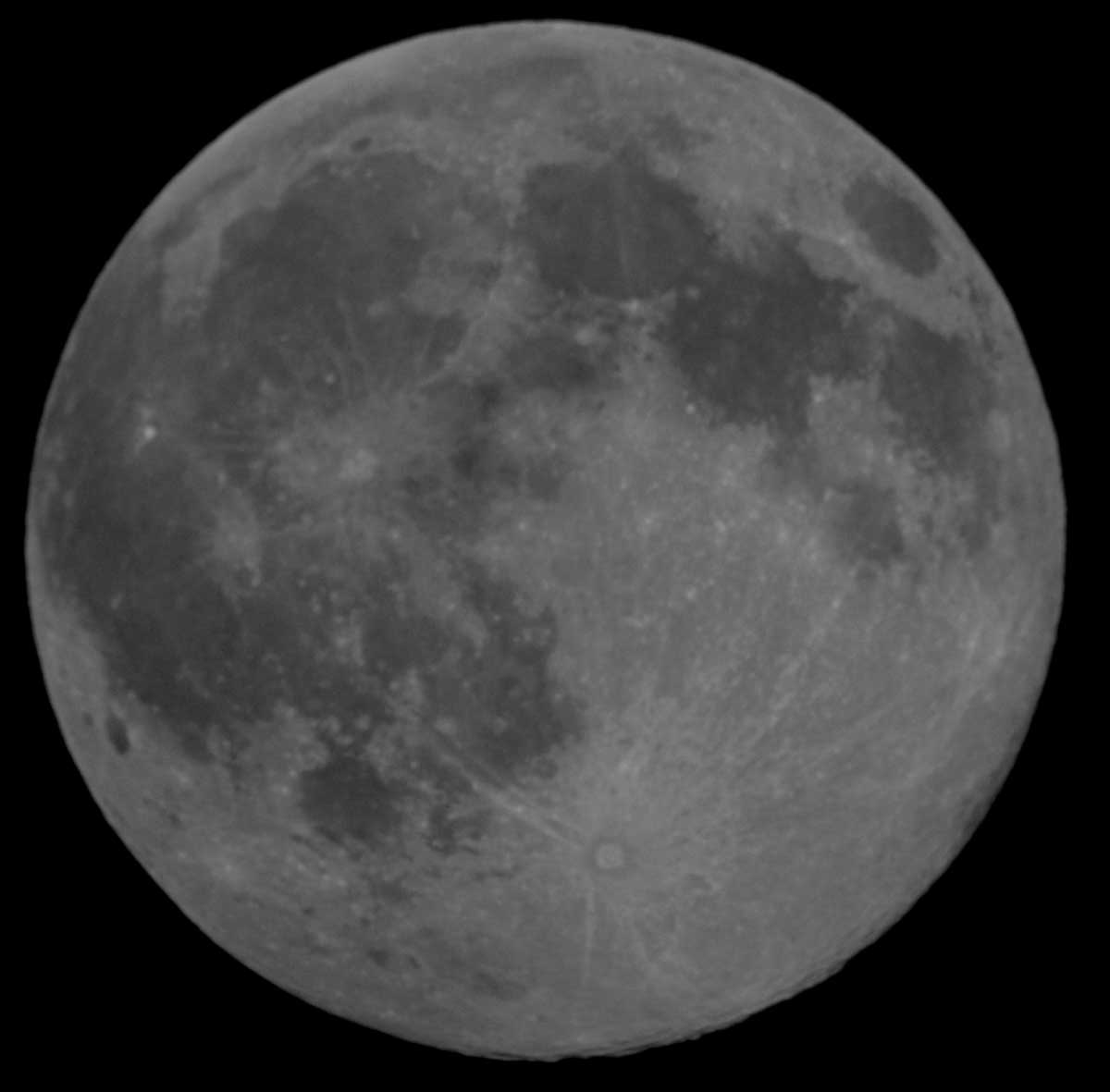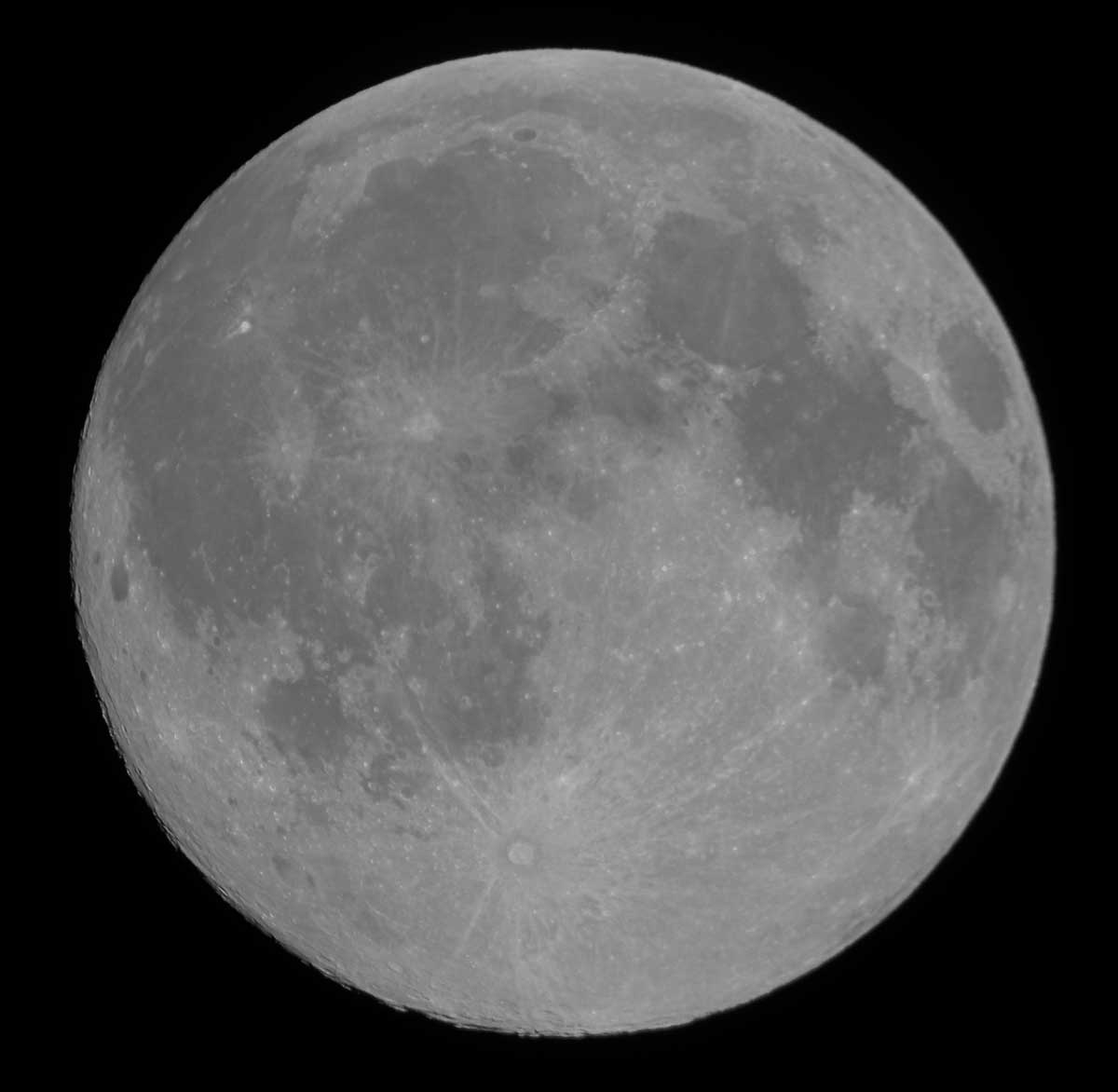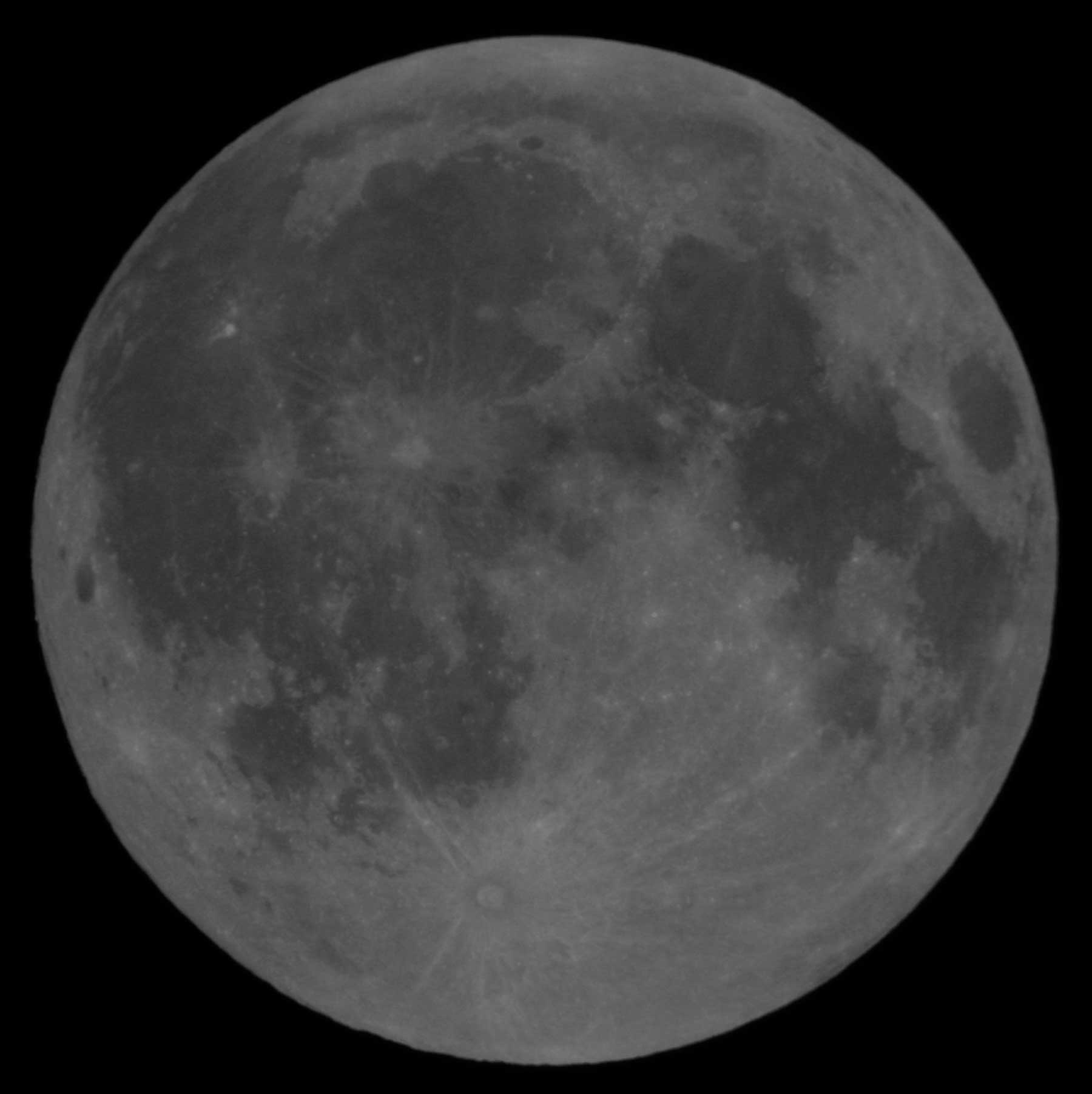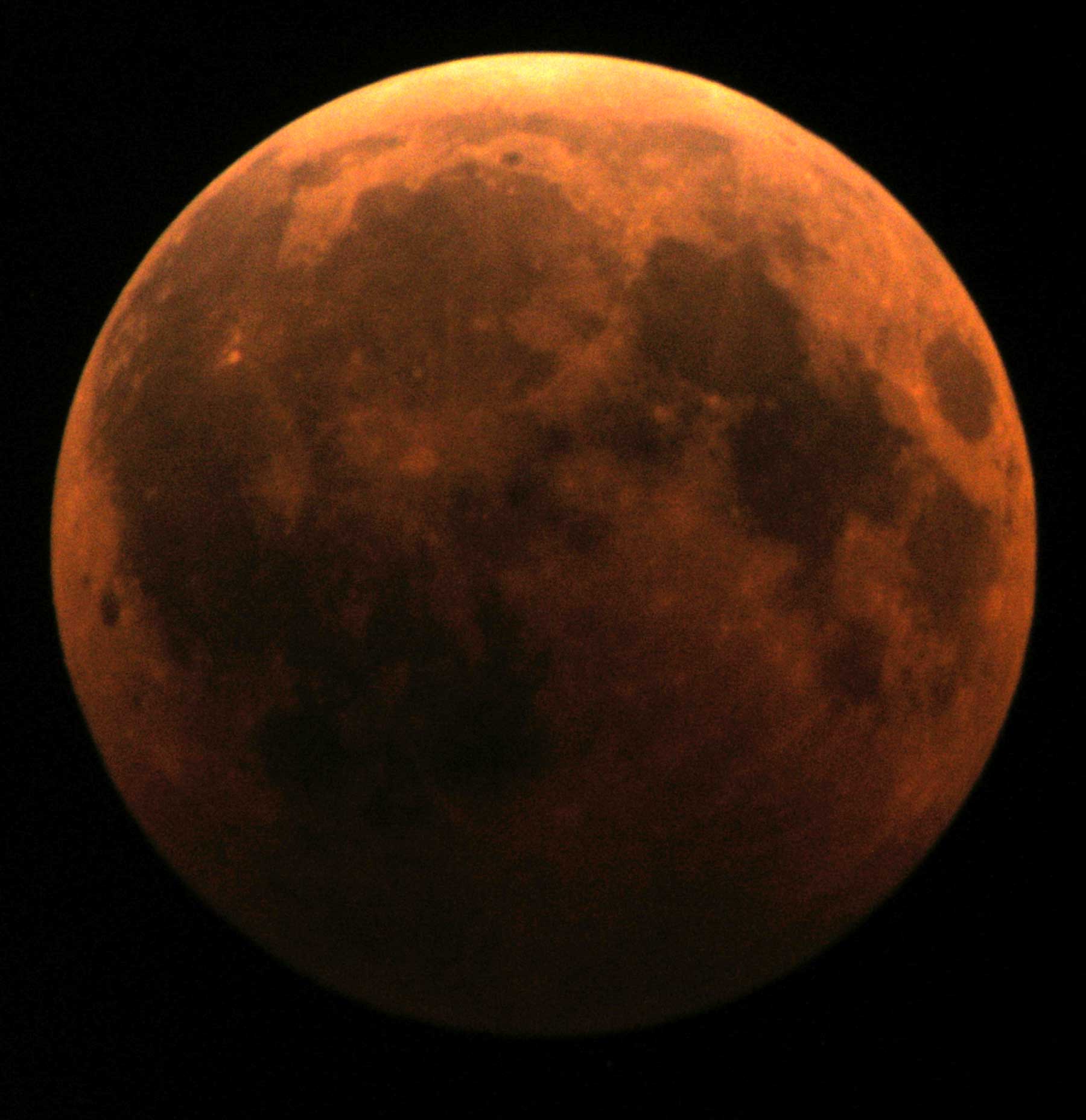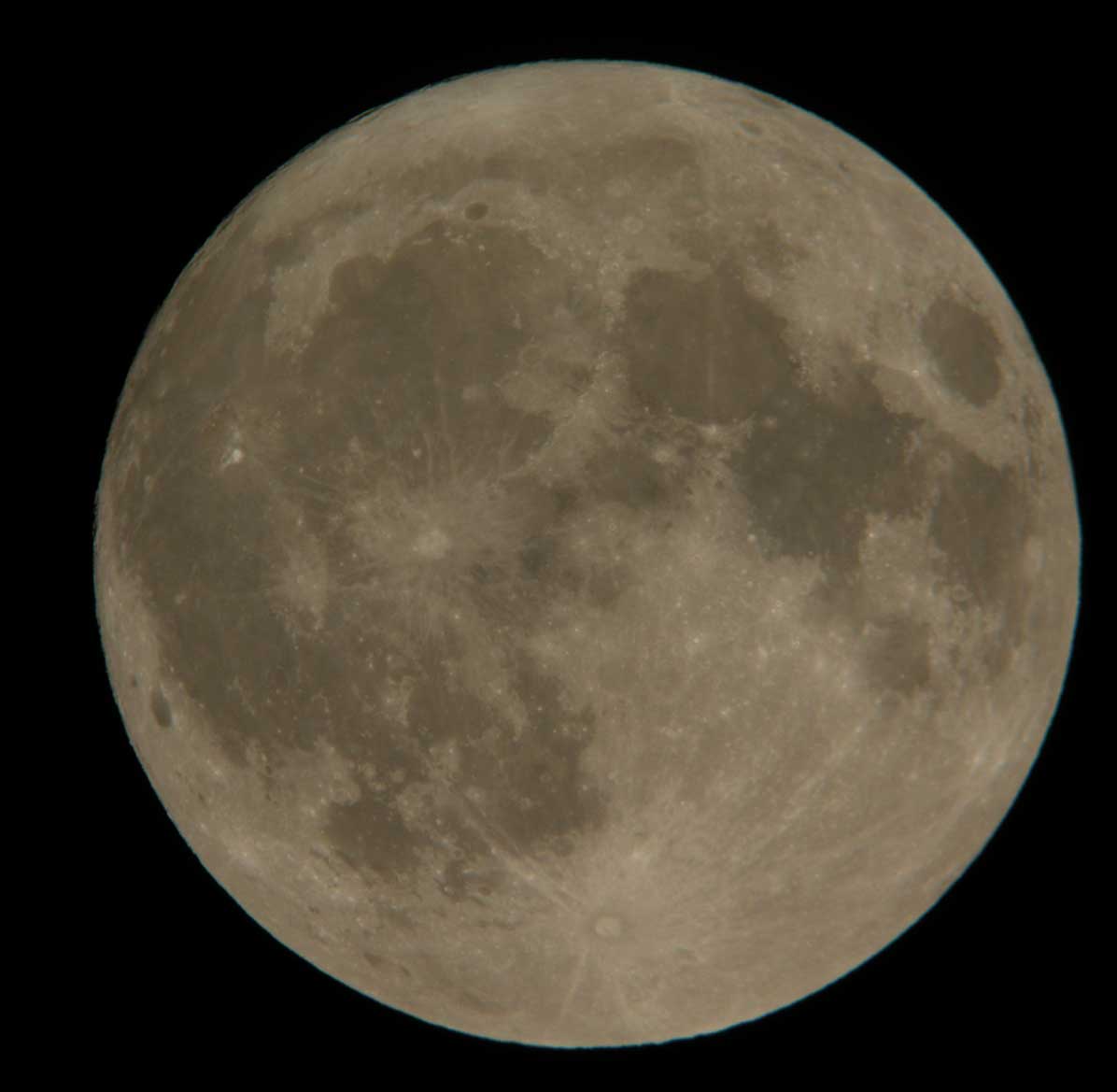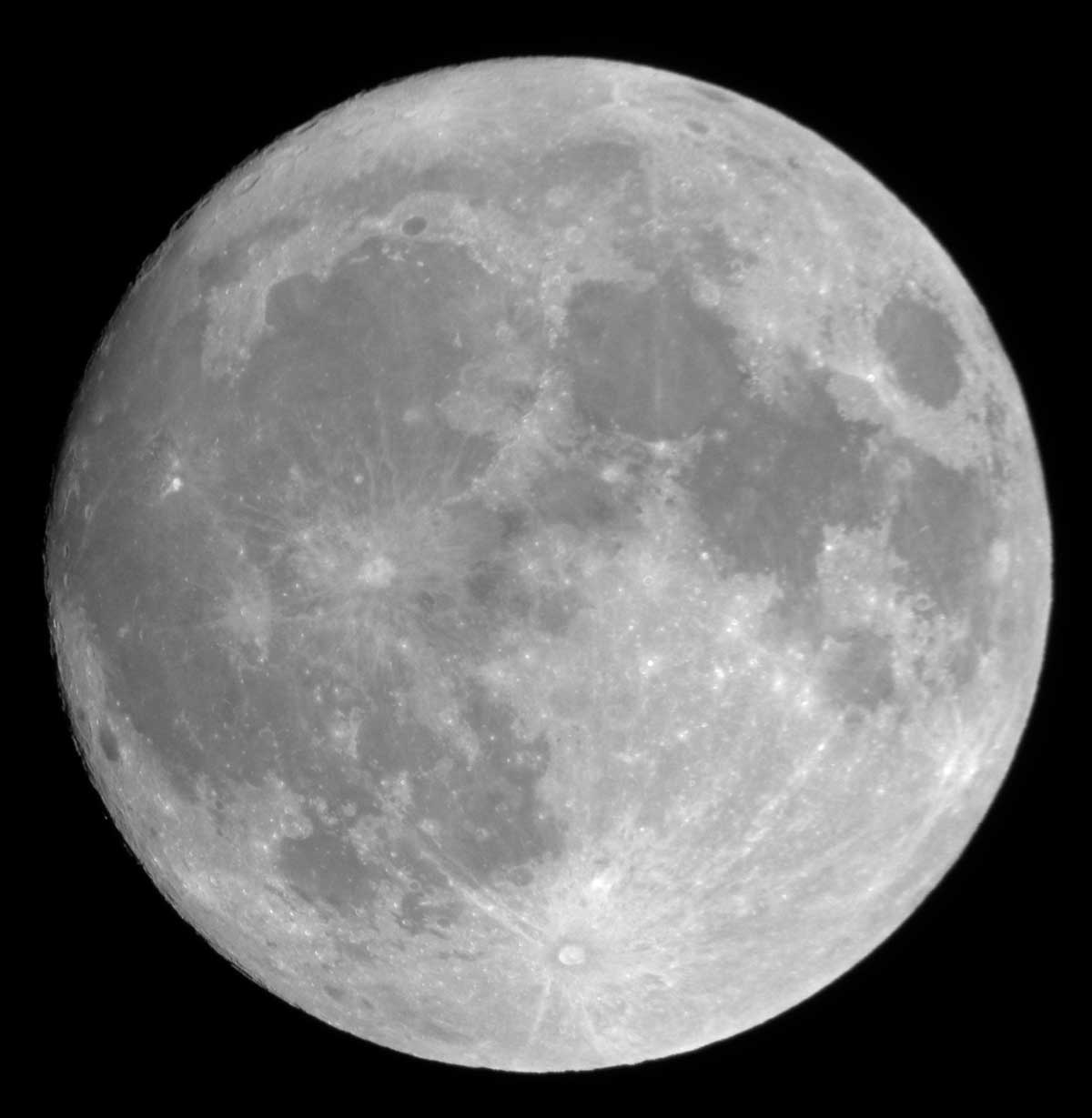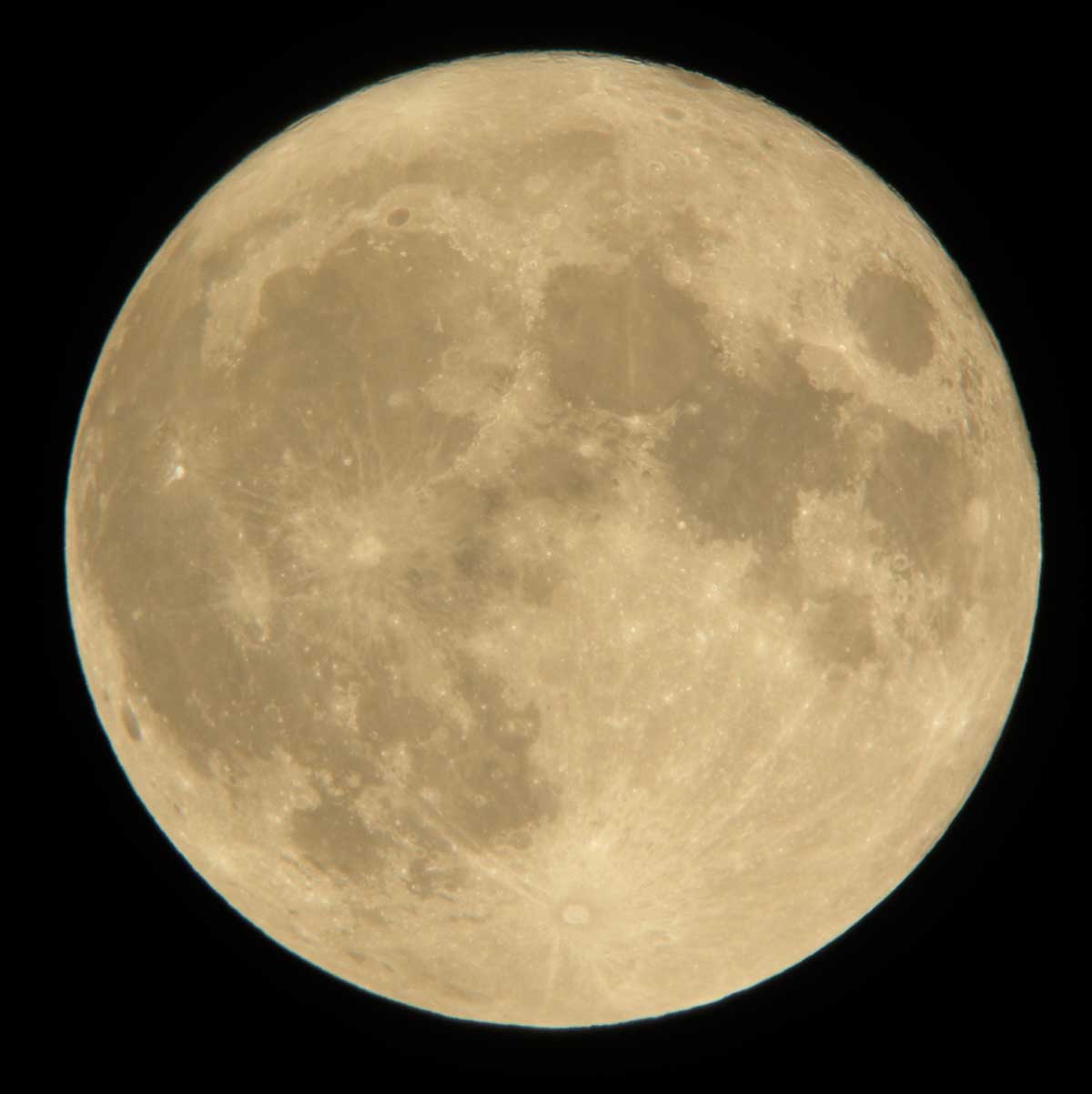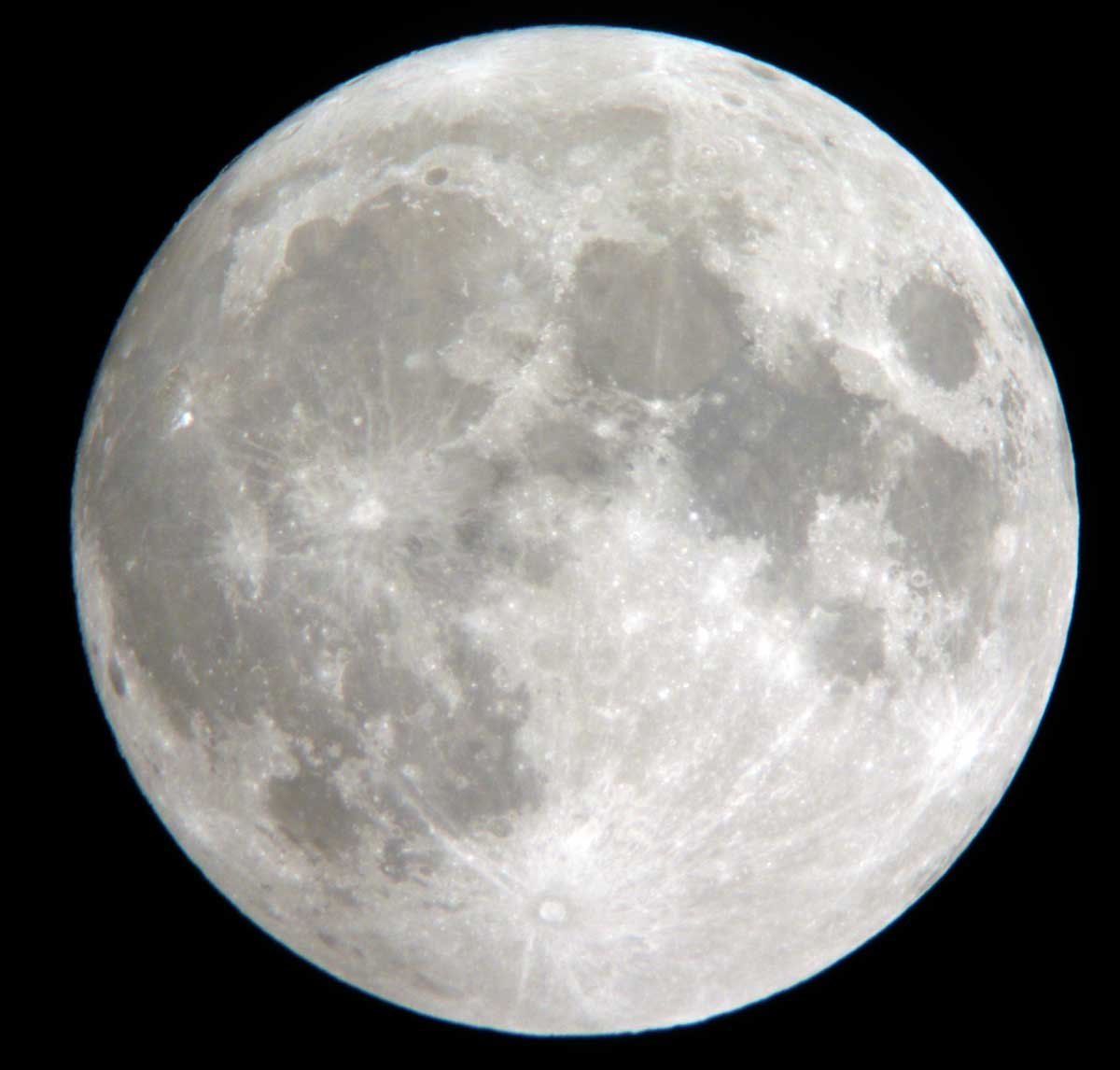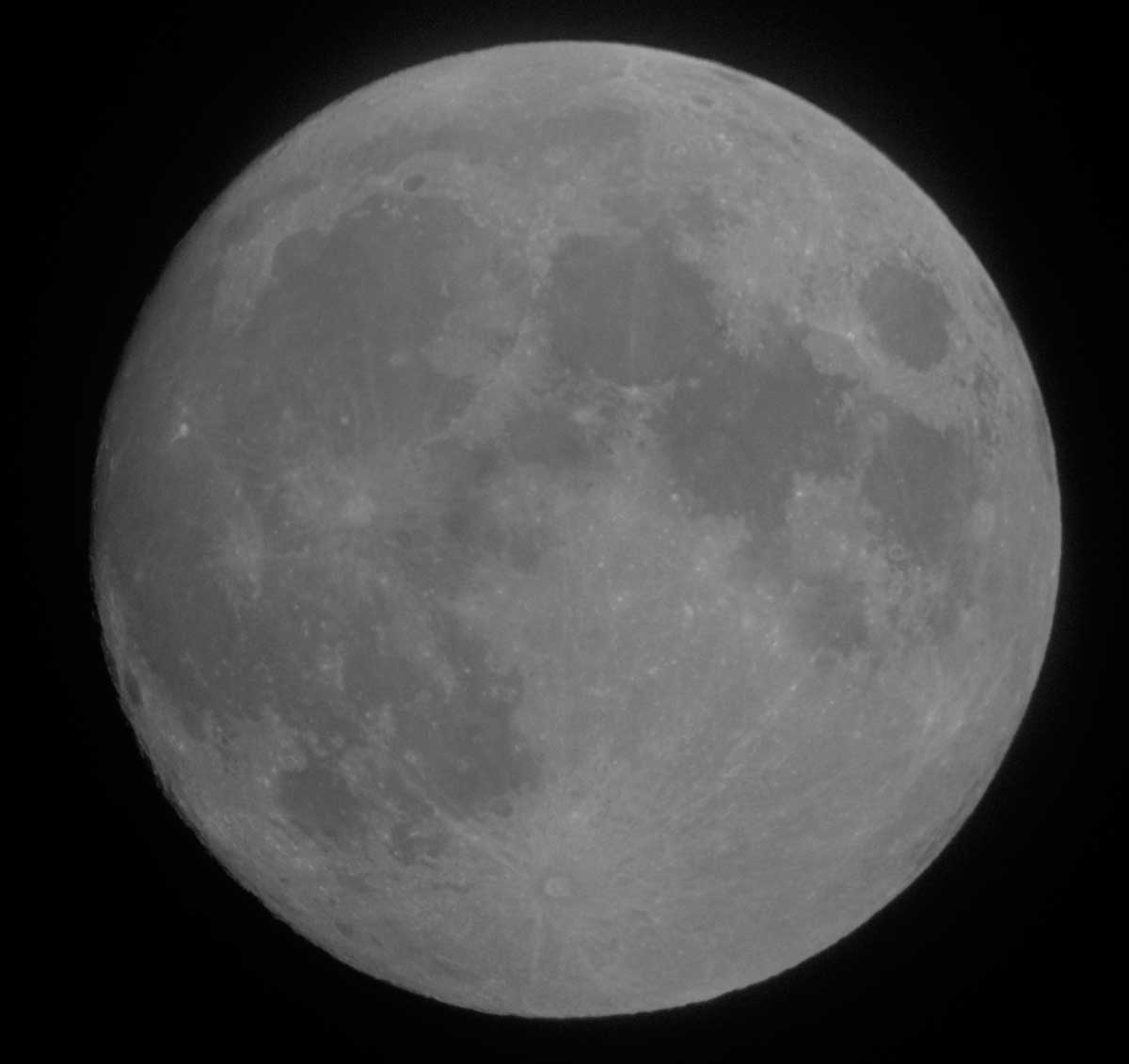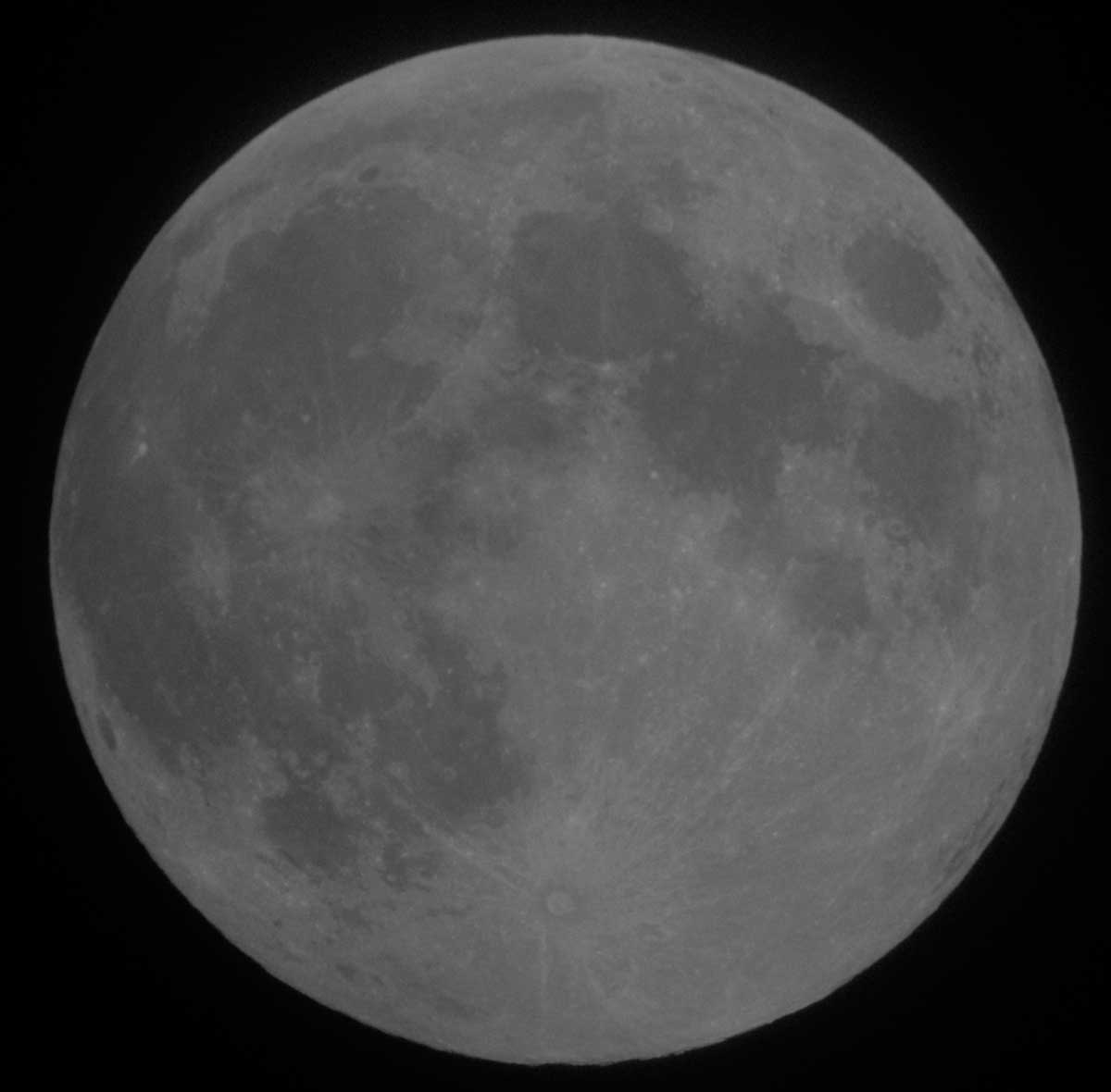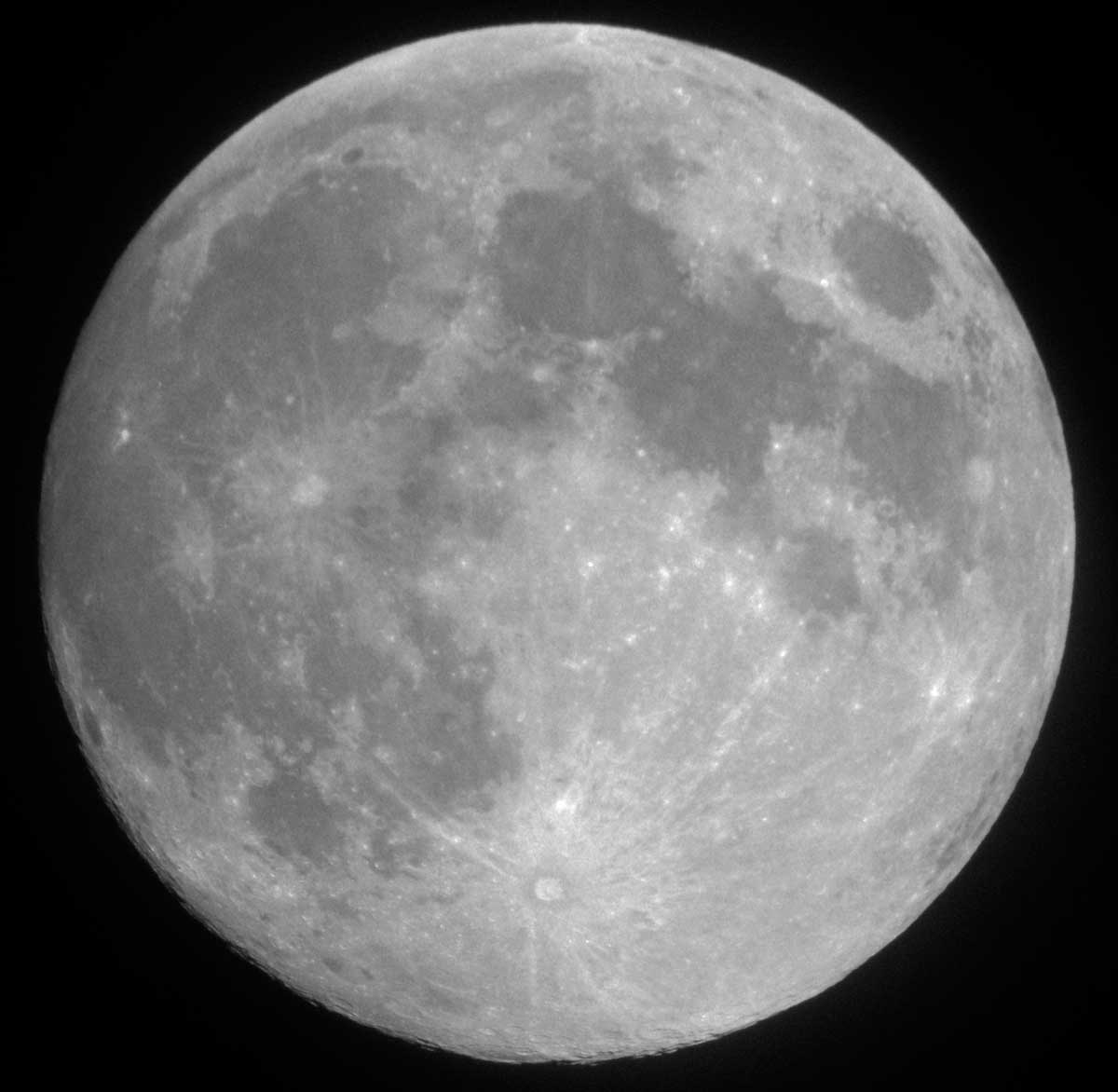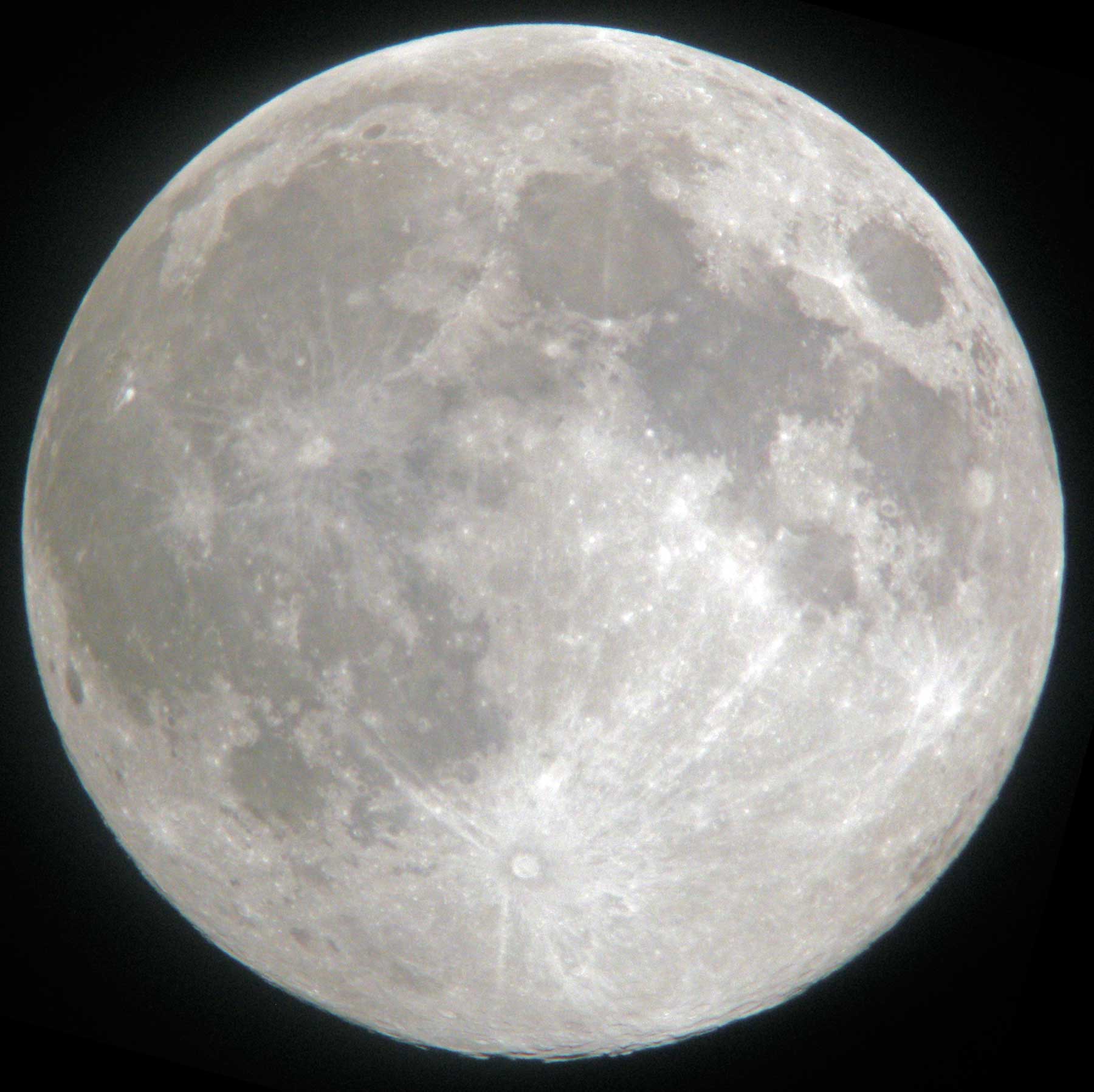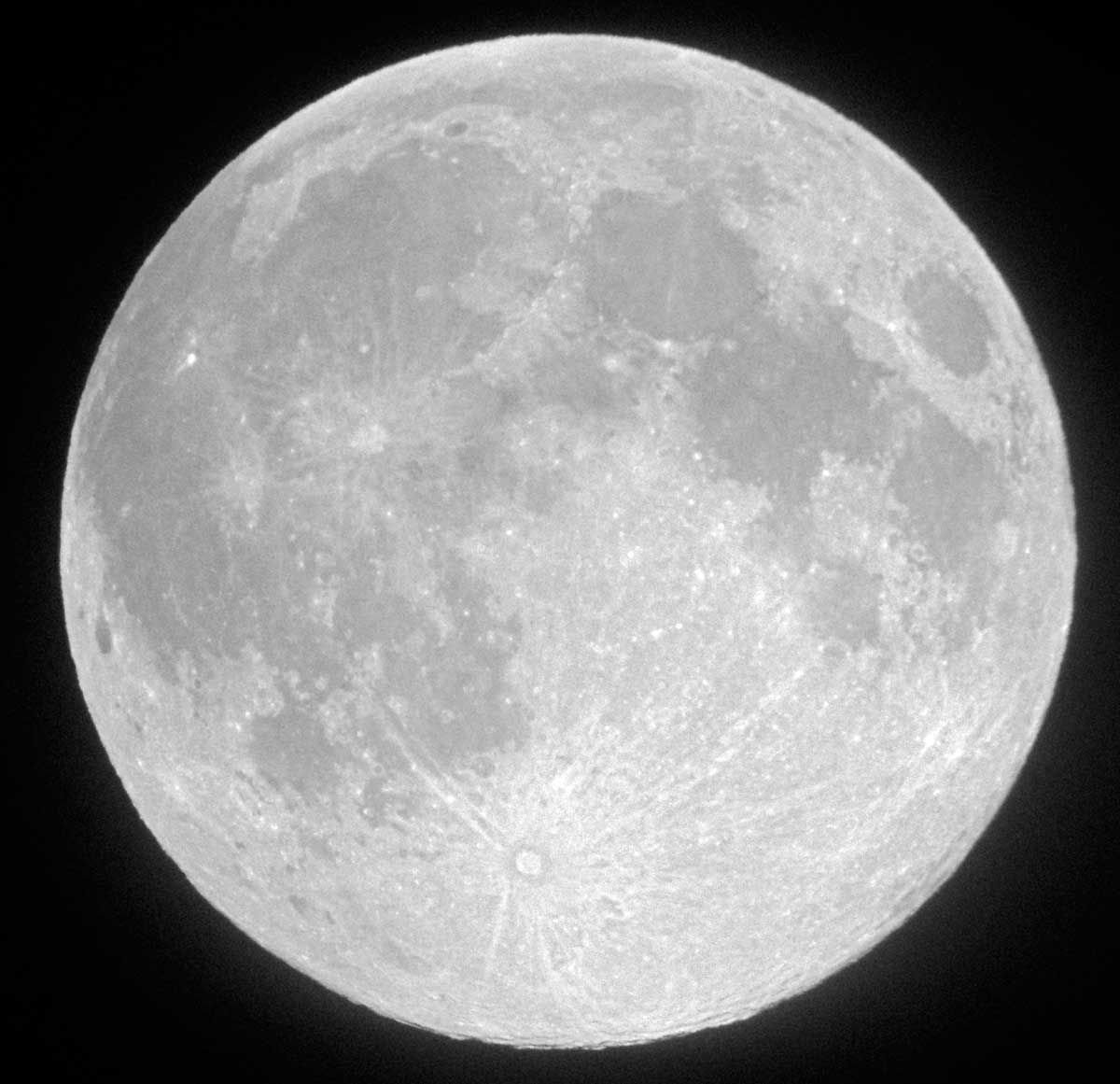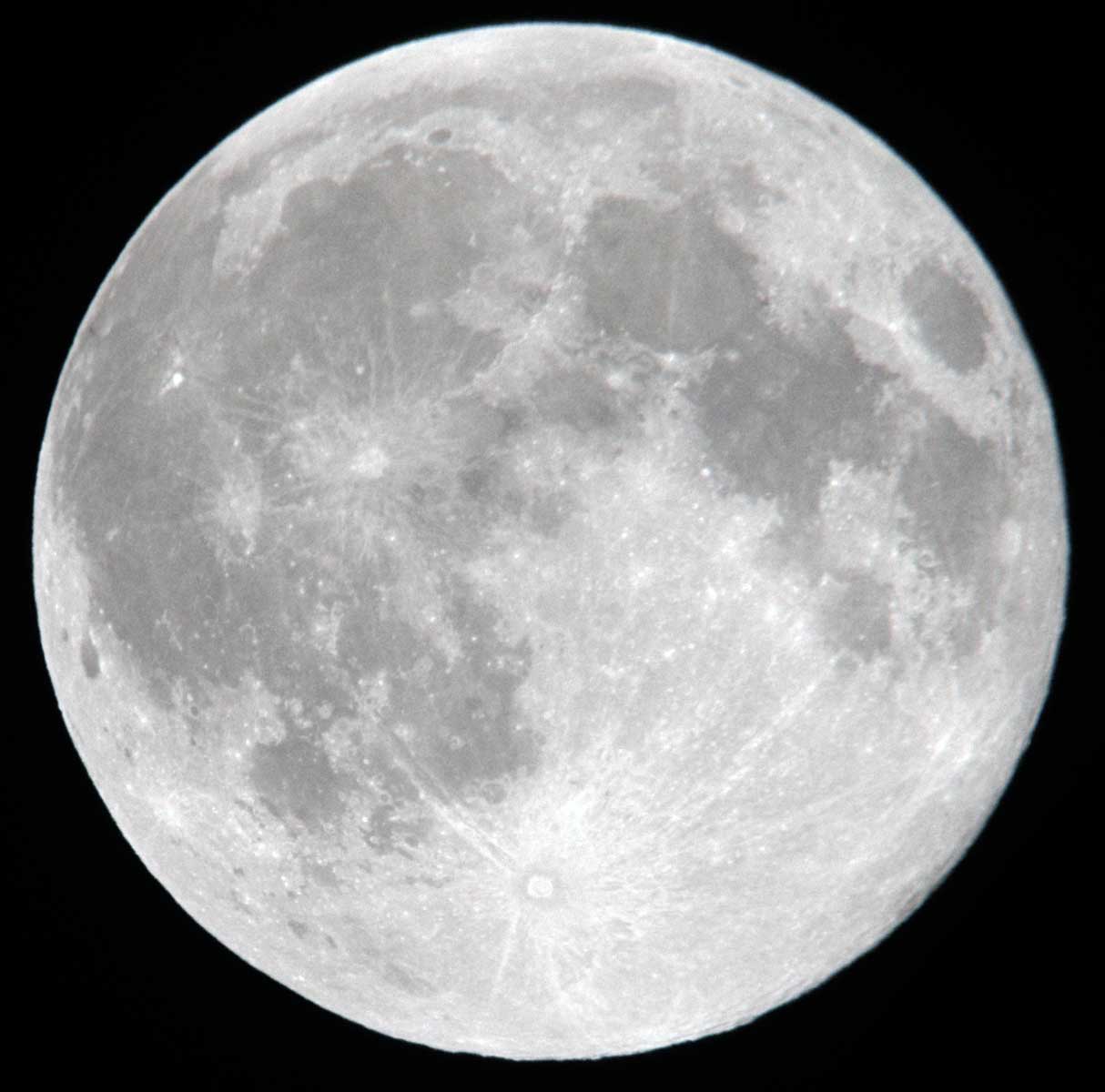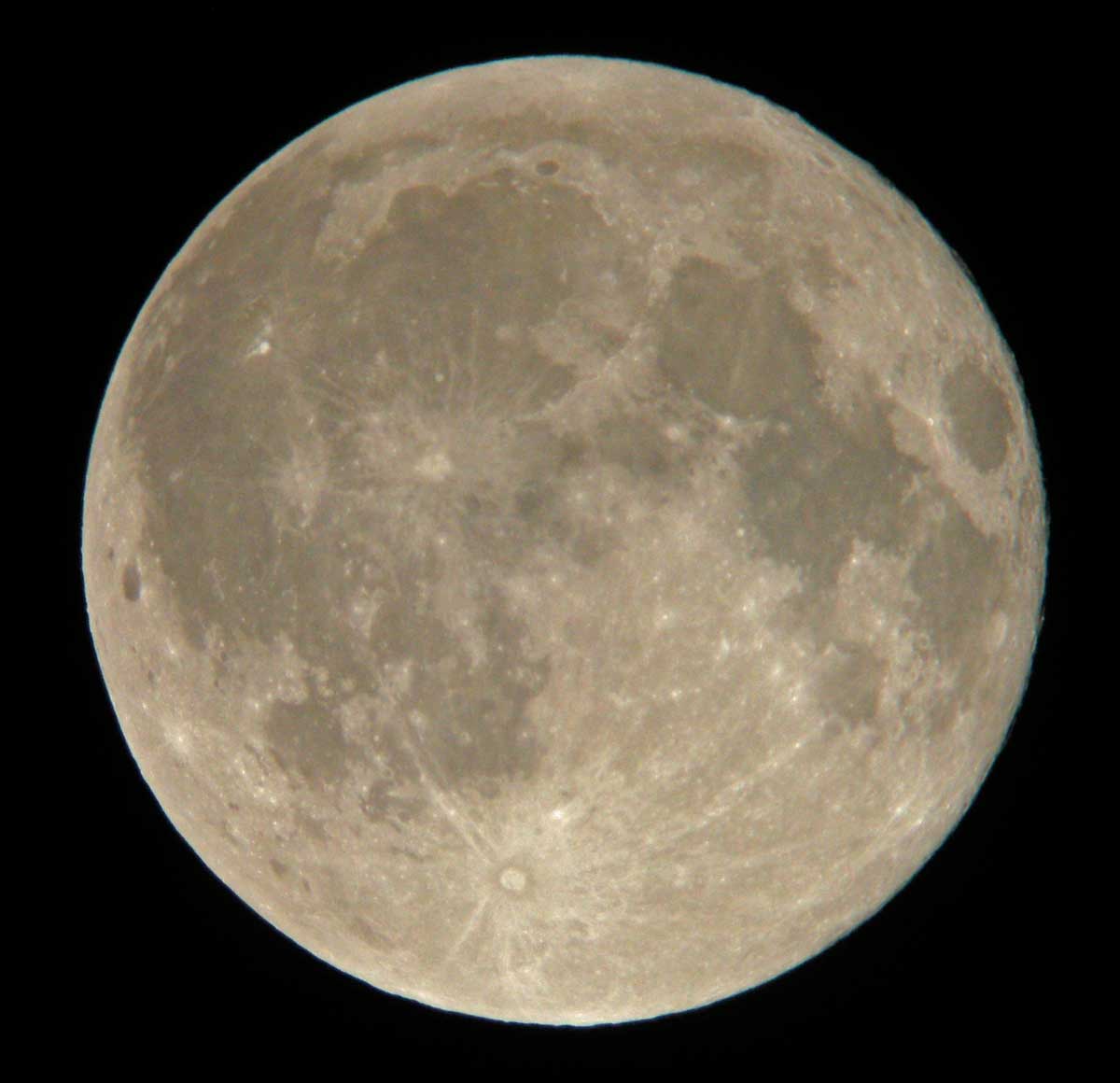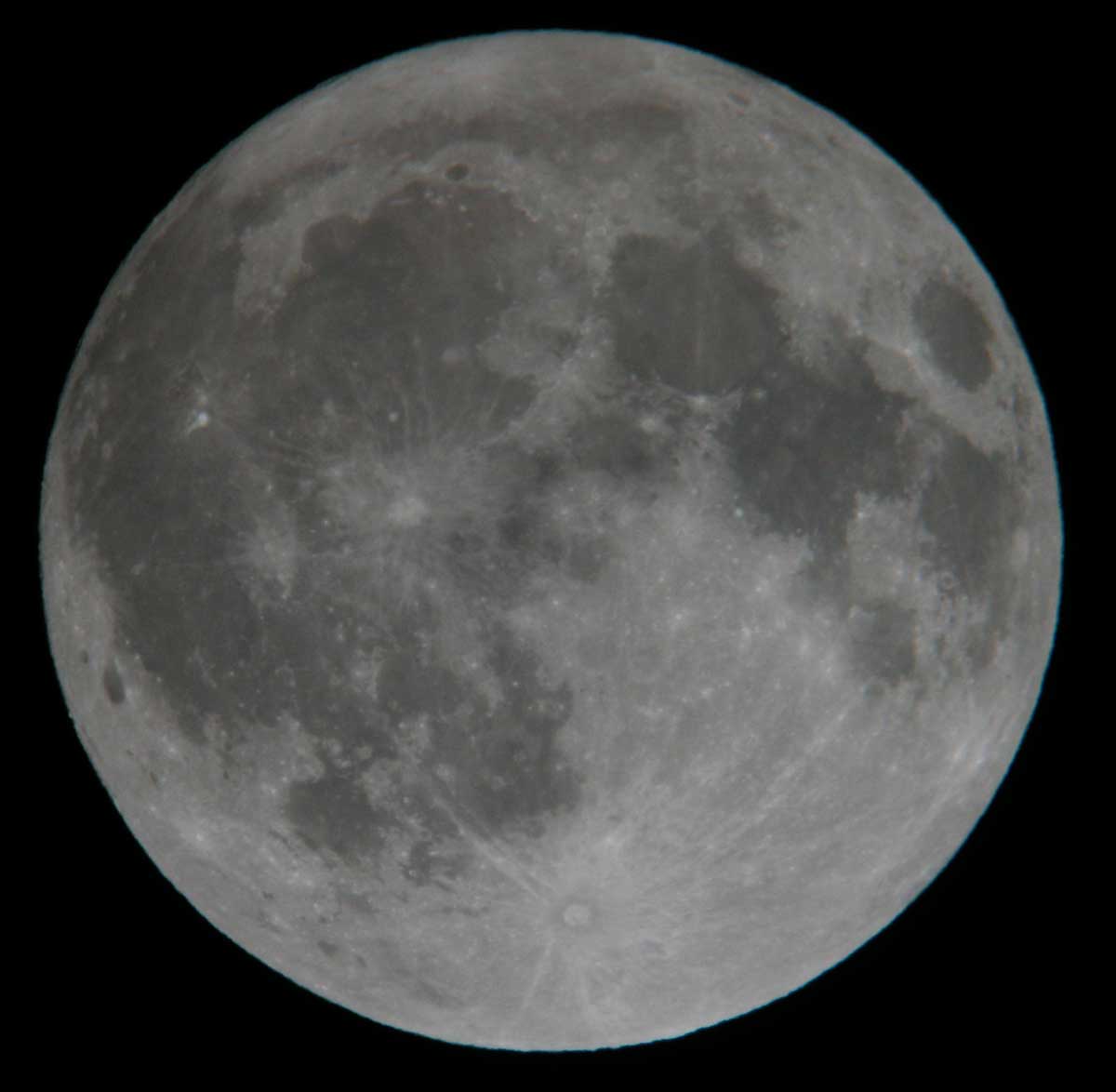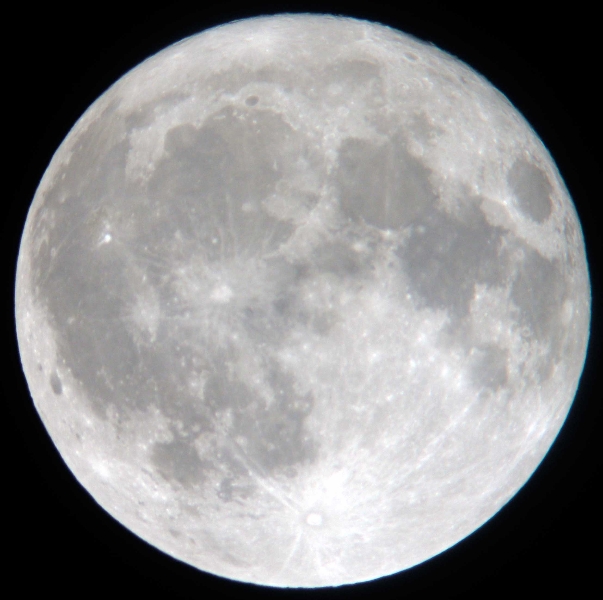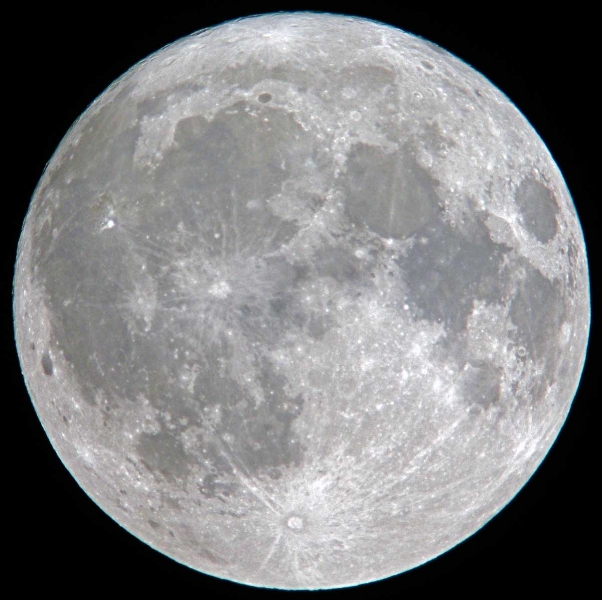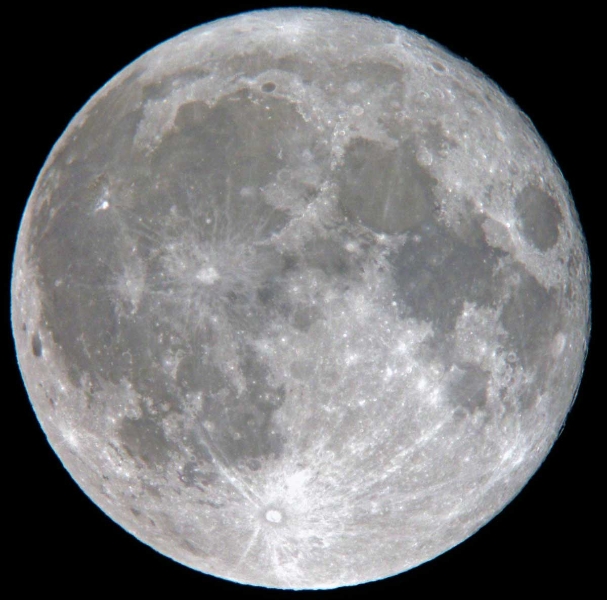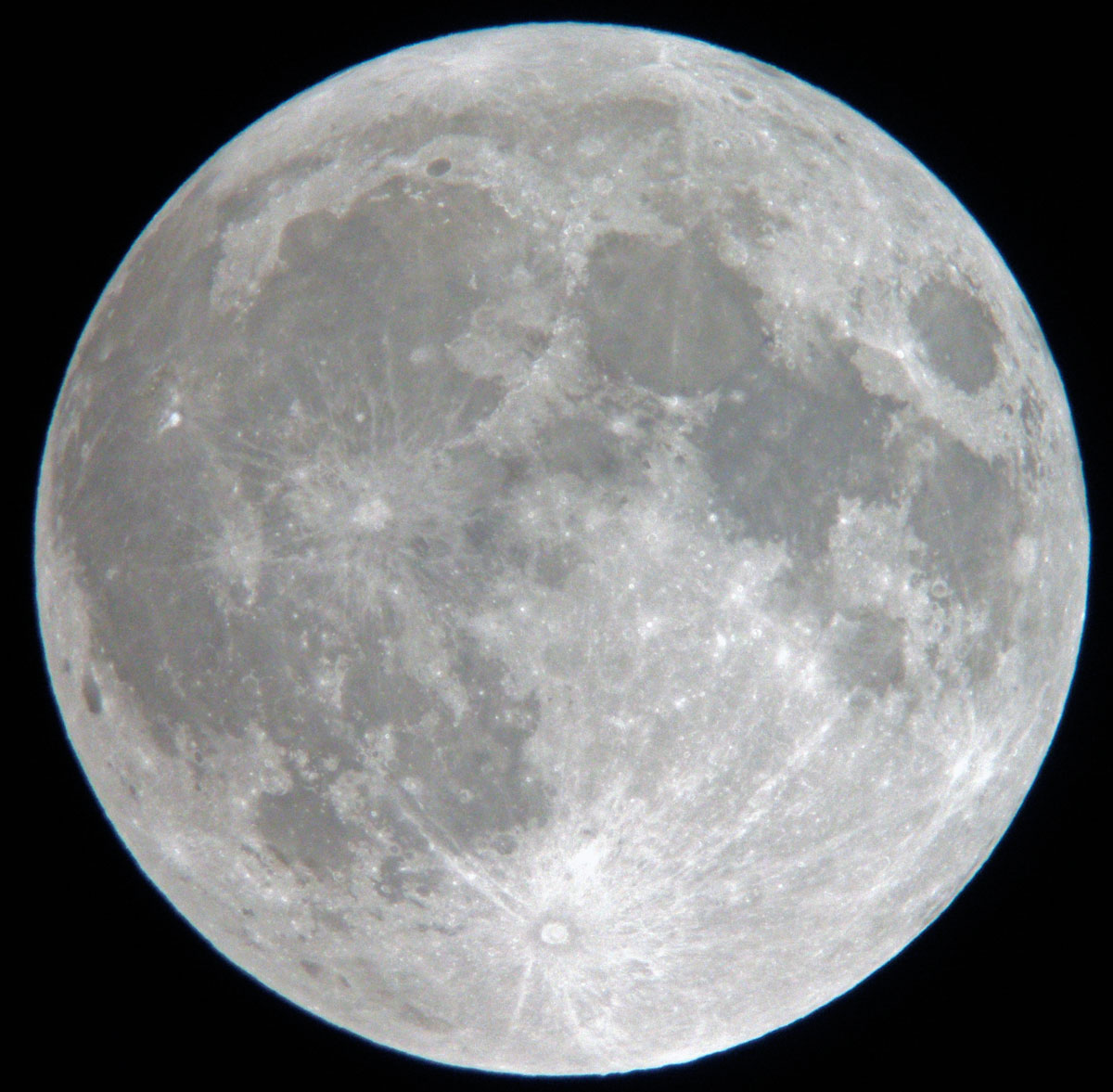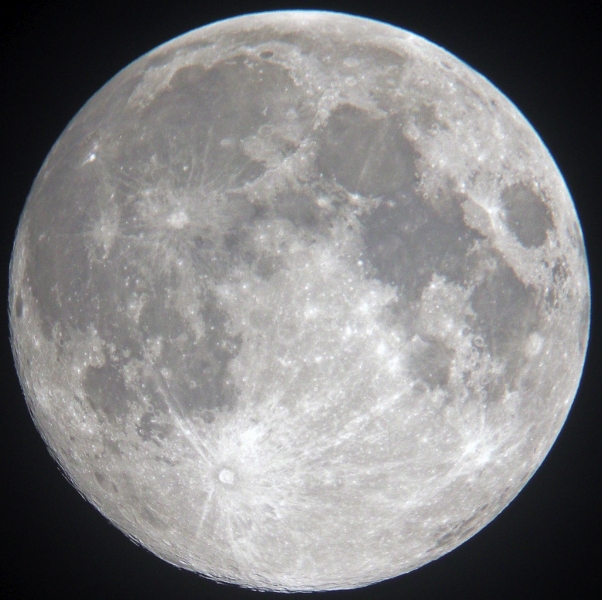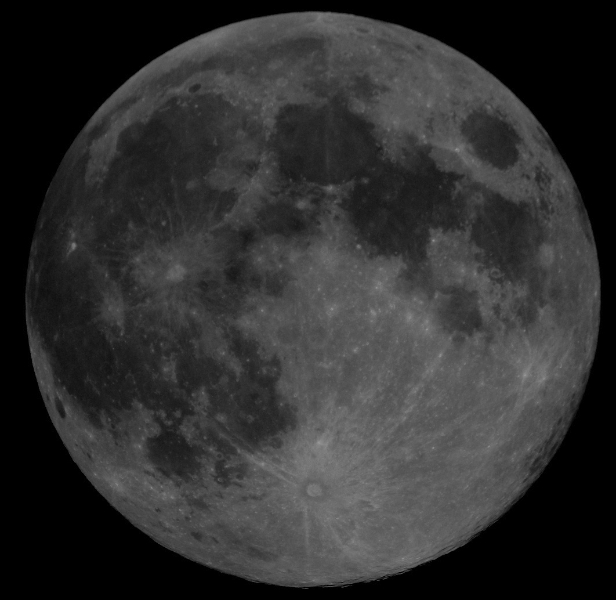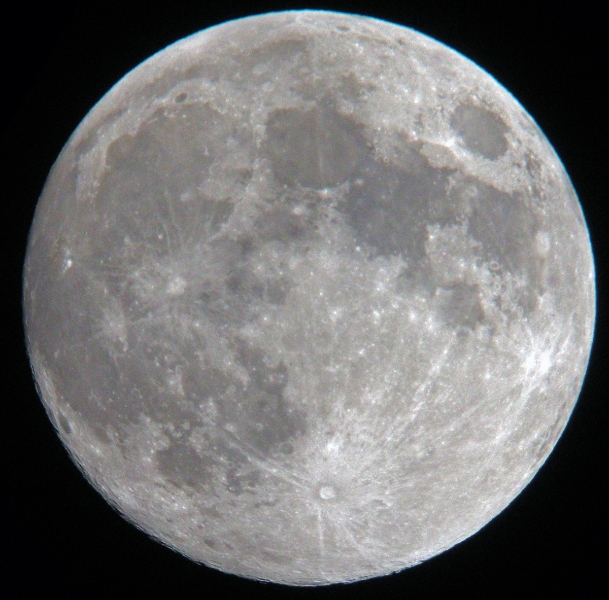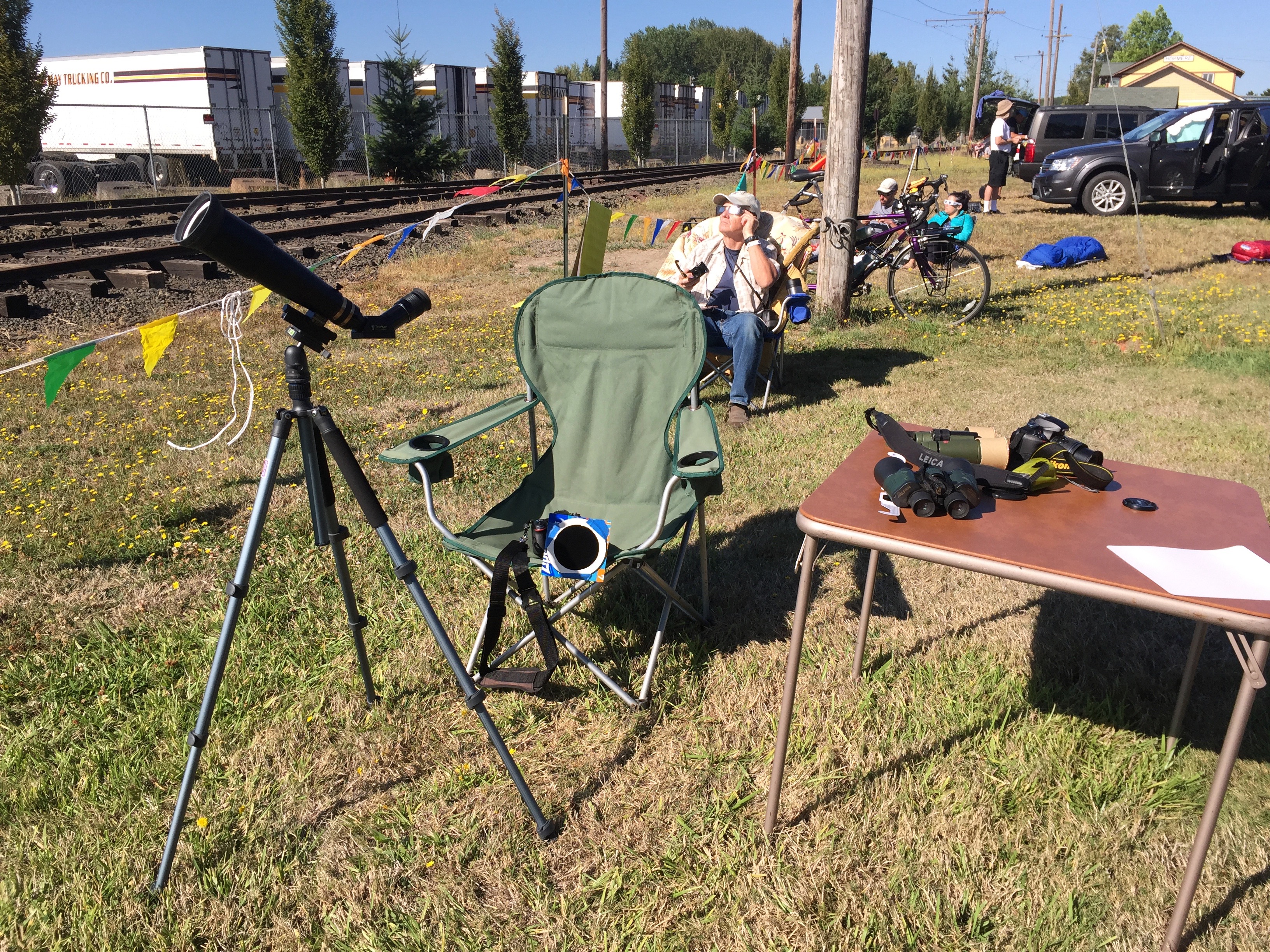The Hunter’s moon rises nearly or completely full over three successive nights at nearly the same time each night. On Eastern Daylight Time this year, the nights of the 27th, 28th, and 29th, at 5:21, 5:57, and 6:35, respectively. Full moon is today at 3:50 p.m. EDT, but this shot was taken last night right around 10 p.m.
It was relatively far away (402 000 km), and the libration was a little over 4 degrees both east (eastern limb tilted toward Earth) and south (southern limb tilted toward Earth). With the eastern tilt, you can just barely make out the margin of Mare Marginis and Mare Smythii on the right edge (Smythii on the equator, Marginis just north of that), and with the southern tilt, if you follow the “7:30” rays from the bright rayed crater Tycho in the southern hemisphere, you should be able to see—if I’ve worked out the confusing selenography correctly—the dark floors of the large craters Schickard and Schiller. Clavius looks as large as a lunar sea, with the prominent crater Porter in its northern rim:
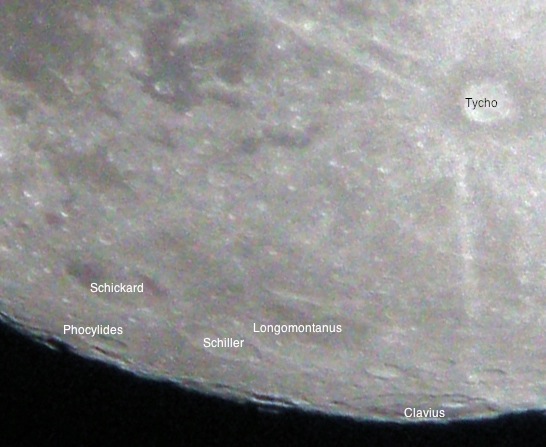
I’m having a bit of a problem with the labeling, though. Tycho is obvious. I’m fairly sure I’ve labeled Schickard and Schiller correctly. But if Clavius is that giant area near the south pole that looks almost as big as a lunar sea, something’s wrong. With the southern limb tilted four degrees toward us, I’m surprised to see Clavius looking like it’s on the southern limb. (Then again, four degrees isn’t a huge tilt; when I simulate the view by looking at my awesome new moon globe, it’s hard to make out Clavius way down there on the bottom.)
I’ll have to try again tonight, perhaps with higher magnification.
Here’s the full moon gallery to date; I’ve only missed a couple since December 2009!

